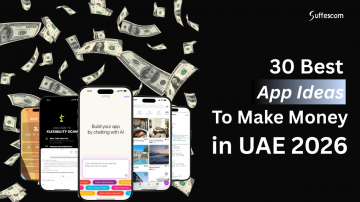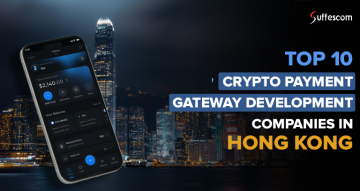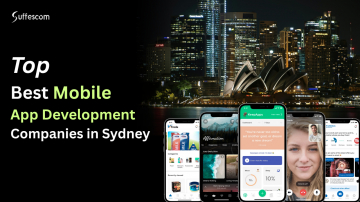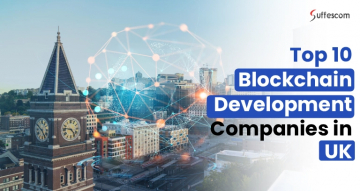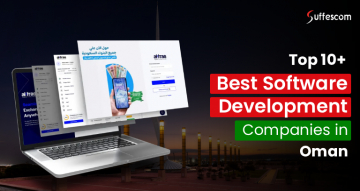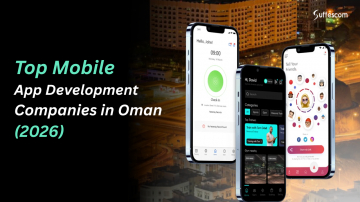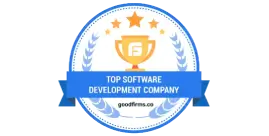How to Build an RWA Tokenization Platform in Just 7 Easy Days

Learn how to build an RWA tokenization platform in seven days. This comprehensive guide covers goal setting, service providers, legal documents, token issuance, testing, and launch strategies for a secure and scalable solution.
The tokenized RWA market is projected to grow from approximately $600 billion in 2023 to $18.9 trillion by 2033, reflecting a compound annual growth rate (CAGR) of 53%. Though the demand is strong, you might wonder how to build an RWA tokenization platform efficiently.
Here's a light at the end of the tunnel; what if you could have a working platform in just one week, without stress or confusion? In this blog, we break down each step into clear, simple ideas that anyone can follow.
Whether you are a developer, product manager, or investor, you will find value in our step-by-step guide to creating an RWA token platform. By the end, you will feel confident to set up your own live platform. Ready to dive in and transform your ideas into reality?
Process of Developing an RWA Tokenization Platform
From vision to validation, let's build a compliant, scalable RWA platform with structured steps, tested systems, and expert clarity.

Day 1: Define Your Goal
First day, let's set a solid foundation and decide on the strategic direction for your platform.
Why Do You Need This Platform?
The process signaling the answer on how to build an RWA tokenization platform starts with clarifying the objectives. Why do you even need this platform?
Key Questions to Answer:
- Do you need fractional ownership to enhance liquidity?
- Do you want to streamline asset transfers and reduce friction?
- Do you need to minimize counterparty risks and intermediaries?
- Are you looking to democratize access to high-value assets?
- Do you want to create new revenue streams through tokenization?
Having a clear understanding of your goals lays the foundation for the next steps. Clarity on your objectives will help you decide the right tech stack, appropriate tokenomics, and compliance requirements.
List Down the Assets You Want to Tokenize
There are plenty of assets to tokenize, and choosing beforehand makes sense. Let's understand which assets can be tokenized:
1. Real estate: Residential and commercial properties, including apartments, office buildings, retail spaces, and land parcels. A real estate fractional ownership platform enables multiple investors to own portions of high-value properties.
2. Commodities: Physical commodities such as gold, silver, oil, natural gas, agricultural products, and precious metals.
3. Art and Collectibles: High-value artworks, antiques, rare collectibles, vintage items, and memorabilia.
4. Financial Instruments: Traditional financial assets, including stocks, bonds, treasury bills, derivatives, and structured products.
5. Intellectual Property and Royalties: Intangible assets like music rights, patents, trademarks, copyrights, film rights, and royalty streams.
6. Private Equity and Venture Capital: Startup equity, private company shares, and venture capital fund interests.
7. Revenue-Sharing Assets: Business cash flows, rental income streams, and profit-sharing arrangements.
Who Are the Final Users?
Identify who would be interested in developing such platforms. Your final users might include any of the following:
1. Tech Startups and Blockchain Developers: Specialized RWA tokenization companies and developers see tokenization as a way to innovate and offer new services.
2. Financial Institutions: Banks, asset managers, investment firms, wealth management companies, and hedge funds.
3. Real Estate Developers and Owners: Property developers, real estate owners, REITs, and property management companies.
4. Art and Collectible Dealers: Dealers in art, antiques, collectibles, galleries, and auction houses.
5. Commodity Traders: Traders dealing in commodities like gold, silver, oil, agricultural products, and energy resources.
6. Regulatory Bodies and Compliance Firms: Organizations focused on ensuring legal and regulatory compliance in tokenized asset markets.
7. Individual Investors: Retail investors seeking fractional ownership opportunities and portfolio diversification.
Day 2: Gather the Essentials
Keeping things in motion, let's start the day with essential preparations and partnerships.
Finding a Trusted RWA Tokenization Development Company
When you're looking to build a real-world asset (RWA) tokenization platform in just 7 days, partnering with a reliable RWA tokenization development company is crucial. Here are the key traits to consider
1. Regulatory Compliance: Check if your provider obtains necessary licenses and conducts Know Your Customer (KYC) and Anti-Money Laundering (AML) checks with automated verification systems.
2. Secure and Scalable Technology: The platform supports various token standards for RWA, such as ERC-20, ERC-1400, ERC-721, and ERC-1155 with multi-chain compatibility.
3. User-Friendly Interface: The platform should provide intuitive interfaces for both issuers and investors, facilitating processes like token issuance, compliance checks, trading, and portfolio management.
4. Liquidity Solutions: The platform must offer secondary marketplaces or Automated Market Maker (AMM) solutions, enabling the buying and selling of tokens post-issuance with sufficient liquidity.
5. Interoperability: The provider must ensure that your tokenized assets can interact with various blockchain networks (Ethereum, Polygon, BSC) and traditional financial systems.
6. Robust Security Measures: The platform should include features like two-factor authentication, multi-signature wallets, smart contract audits, and compliance with industry standards to protect against unauthorized access and fraud.
7. Customization Options: A flexible platform allows for customization to meet your specific needs, aligning with your business model and target assets. Consider a white label tokenization platform for faster deployment.
8. Proven Track Record: Look for companies with successful case studies, client testimonials, and a portfolio demonstrating expertise in RWA tokenization development.
Choose the Right Name and Logo
An appealing name and logo create the first impression of your platform and can significantly influence user trust and engagement.
All the Documentation You Need
Collecting the appropriate documents on Day 2 of your RWA tokenization platform development process will lay a solid foundation for the legitimacy and operational success of your platform.
Legal documents:
1. Company Incorporation Documents
- Articles of Incorporation
- Certificate of Incorporation
- Memorandum and Articles of Association
- Bylaws and Operating Agreements
2. Tokenization Structure Agreements
- Tokenized Special Purpose Vehicle (SPV) agreements
- Direct Asset Tokenization agreements
- Custodian agreements
3. Securities-Related Documents
- Private Placement Memorandum (PPM)
- Information Memorandum
- Subscription agreements
- Investment risk disclosures
4. Licensing and Regulatory Approvals
- Securities licenses
- Custodian licenses
- Fund management licenses
- Money services business (MSB) registration
5. AML/KYC Policies
- AML/KYC compliance manuals
- Risk assessment reports
- Customer due diligence procedures
- Enhanced due diligence protocol
Financial Documents:
1. Financial Statements
- Balance sheets
- Income statements
- Cash flow statements
- Audited financial reports
2. Investor Documentation
- Accredited investor questionnaires
- Proof of income/assets
- Investor suitability assessments
3. Asset Valuation Reports
- Appraisal reports
- Valuation certificates
- Independent valuation opinions
- Market analysis reports
4. Tax Compliance Documents
- Tax filings
- Tax exemption certificates
- Tax compliance reports
- International tax considerations
5. Insurance Policies
- Professional liability insurance
- Cybersecurity insurance
- Directors and officers insurance
- Asset insurance
How to Build an RWA Tokenization Platform Fast?
Learn how to build an RWA tokenization platform in 7 days with our expert guide and proven methodology.
Day 3 - Set Up the Core Infrastructure
On Day 3, you'll set up the core of your real-world asset tokenization software. The process starts with technical foundations.
Creating a Main Account with the Service Provider
After signing up with the service provider and creating your account, integrate your crypto wallet to manage tokens.
Setup Steps:
1. Account Registration: Complete the registration form with business details
2. Identity Verification: Submit required KYC documents
3. Wallet Selection: Choose the type of wallet you wish to connect (MetaMask, WalletConnect, Coinbase Wallet)
4. Wallet Connection: Follow the instructions set by the provider to connect the wallet securely
5. Confirmation: Ensure that your wallet is correctly connected and recognized by the platform
Choosing the Basic Interface
It's time to shape the visual and functional aspects of your real-world asset (RWA) tokenization platform. Select the right template to set the tone for user experience and operational efficiency
Key Considerations:
- Industry Relevance: Template aligns with asset tokenization sector
- Customization Flexibility: Easy to modify colors, layouts, and components
- Responsive Design: Works seamlessly across desktop, tablet, and mobile
- Security Features: Built-in security protocols and encrypted communications
- Integration Capabilities: Compatible with blockchain networks and APIs
Recommended Template Sources:
1. Webflow
Offers a variety of customizable templates tailored for blockchain projects with no-code customization options.
2. ThemeForest
Provides a range of professional templates suitable for financial services platforms with advanced features.
3. Custom Development
For unique requirements, consider custom UI/UX development for complete control over design and functionality.
Add Your Branding Elements
Branding decides how your platform communicates its values, professionalism, and trustworthiness. Branding constitutes the following essential elements:
- Logo Placement
- Color Scheme
- Typography
- Imagery and Icons
- Tone and Language
Thoughtfully add your logo and basic branding elements to build a professional RWA tokenization application that inspires trust.
Day 4: Define Your Asset Model
Establish the foundation of your real-world asset (RWA) tokenization application by defining your asset model comprehensively.
Describe Each Asset in Detail
1. Asset Type
Clearly state whether it's real estate, commodities, art, financial instruments, intellectual property, or other asset classes.
2. Ownership Structure
Clarify whether the asset is wholly owned by you, leased, has shared ownership, or involves complex ownership arrangements.
3. Valuation Method
Describe how the asset's value is determined, including appraisal methods, frequency of revaluation, and independent verification processes.
4. Income Generation
Explain any income generated by the asset, such as rental income, royalties, dividends, or profit-sharing arrangements.
5. Legal Rights
Outline the legal rights associated with the asset, including any encumbrances, restrictions, liens, or regulatory limitations.
6. Risk Factors
Identify potential risks including market volatility, liquidity constraints, regulatory changes, and asset-specific risks.
Upload the Supporting Documents
Upload the following documents to validate the asset's details and ensure compliance:
1. Proof of Ownership
Documents like title deeds, purchase contracts, certificates, or registration papers that confirm ownership.
2. Valuation Reports
Independent appraisals or assessments that establish the asset's market value from certified valuators.
3. Legal Agreements
Contracts, licenses, patents, or legal documents that define the legal rights and obligations associated with the asset.
4. Compliance Certificates
Documents that demonstrate adherence to relevant regulations, standards, building codes, or industry requirements.
5. Insurance Documentation
Current insurance policies covering the asset against damage, loss, or liability.
Ensure these documents are clear, up-to-date, and legally valid to maintain credibility and comply with regulatory requirements.
Set Rules for Token Ownership
Establish straightforward rules to govern token ownership and transactions to avoid complexities:
1. Investor Eligibility
Define who can purchase asset-backed tokens (accredited investors, qualified purchasers, retail investors with limits).
2. Token Supply and Limits
Specify the number of tokens available per asset and any minimum or maximum purchase limits per investor.
3. Transfer Restrictions
Mention any limitations on transferring tokens, such as lock-up periods, approval requirements, or right of first refusal.
4. Income Distribution
Detail how income from the asset will be distributed among token holders (frequency, method, calculation).
5. Governance Rights
If applicable, describe any governance rights associated with token ownership, including voting rights on major decisions.
6. Exit Mechanisms
Outline how token holders can exit their investment, including secondary market access or redemption rights.
These rules should be clear, enforceable, and compliant with relevant securities laws to ensure smooth operations and build investor trust.
Day 5: Create and Issue Tokens
Create and issue tokens representing your RWAs with proper configuration and testing.
Use the Platform's Guided Form
Utilize the tokenization platform's user-friendly interface to create your token:
1. Token Name
Choose a unique and descriptive name that reflects the underlying asset (e.g., "Manhattan Commercial Real Estate Token").
2. Token Symbol
Assign a short and memorable symbol (3-5 characters, e.g., "MCRET").
3. Total Supply
Determine the total number of tokens to be issued, considering the asset's value and the desired fractionalization level.
4. Decimals
Decide on the number of decimal places for token precision (commonly 18 for ERC-20 tokens).
5. Blockchain Network
Select the appropriate blockchain (Ethereum, Polygon, Binance Smart Chain, Avalanche) for token issuance based on fees and speed.
6. Token Standard
Choose the appropriate standard:
- ERC-20 for fungible tokens
- ERC-1400 for security tokens with compliance
- ERC-721 for unique assets
- ERC-1155 for multi-asset tokenization
7. Smart Contract Parameters
Configure:
- Transfer restrictions
- Compliance rules
- Distribution mechanisms
- Governance parameters
Ensure all information is accurate and aligns with the asset's characteristics.
Verify Asset Information
After finalizing this information, review it to verify that all asset information matches the token details:
- Asset description and specifications
- Valuation and pricing
- Legal rights and obligations
- Ownership structure
- Income distribution mechanisms
Issue a Small Batch of Test Tokens
Before the full launch, issue a small batch of test tokens to test the process and ensure everything functions as expected.
Testing Process:
1. Issue Limited Quantity: Create 10-100 test tokens on a testnet (Goerli, Mumbai)
2. Internal Distribution: Distribute them to internal team members or trusted partners
3. Functionality Testing: Test transfers, compliance checks, and wallet integration
4. User Experience Evaluation: Gather feedback on the token's functionality and overall experience
5. Bug Identification: Document any issues or unexpected behaviors
6. Iterate: Make necessary adjustments based on testing results
Day 6: Test and Iterate
This step requires more attention because feedback is still coming, and you have a whole new list of scope for improvements.
Explore the Platform with Pre-Launch Users
Perform beta testing by inviting the initial users of the platform to navigate and interact with the tokenization application:
1. User Experience: Assess the ease of navigation, clarity of instructions, and overall user-friendliness.
2. Functionality: Test key features like token purchase, wallet integration, and document uploads.
3. Performance: Evaluate the platform's speed, responsiveness, and reliability.
A fresh perspective with reliable feedback is bound to multiply your platform's performance.
Collect and Analyze Feedback
Feedback Categories:
- Critical issues requiring immediate fixes
- Important improvements for user experience
- Nice-to-have features for future updates
- Positive aspects to maintain
Feedback Channels:
- User surveys
- Direct interviews
- Usage analytics
- Error logs
- Support tickets
Give It a Final Touch
Iterate based on the feedback received from the testing phase:
Priority Fixes:
1. Ambiguous Instructions: Clarify any instructions that may cause confusion
2. Missing Information: Add essential details and documentation
3. Navigation Issues: Fix any problems that make it difficult for users to access features
4. Performance Optimization: Improve loading times and responsiveness
5. Security Enhancements: Address any security concerns identified
Day 7: Time to Go Live
On the final and seventh day of the RWA tokenization infrastructure development process, you need to launch your platform and notify users.
Switch and Share
Firstly, switch from test mode to live mode, but before doing so, maintain a data backup, verify the configurations, and conduct final tests. Only after these steps should you make your platform accessible to the public.
Distribute the platform to the potential buyers, collaborators, or stakeholders involved in the project. Encourage them to explore the platform and provide feedback.
After launching the platform, monitor essential metrics such as
1. Number of users visiting the platform.
2. Quantity of tokens sold and revenue generated.
3. Interactions such as sign-ups, inquiries, or support requests.
Utilize the collected data to
1. Understand user behavior and preferences to identify trends.
2. Enhance platform functionalities based on user feedback.
3. Tailor marketing strategies to attract more users.
These actions help refine your platform and improve user satisfaction.
Understanding Asset Tokenization Platform Development Cost
When planning your RWA tokenization development, understanding the cost structure is crucial for budgeting and ROI calculations.
Cost Breakdown
White Label Solution: $15,000 - $30,000
- Ready-to-deploy platform
- Basic customization included
- Standard features and integrations
- 3-6 weeks deployment
- Lower risk, faster launch
Custom Development: $30,000 - $50,000
- Built from scratch
- Complete customization
- Advanced features
- 4-8 months development
- Tailored to exact specifications
Conclusion
Your continued reading signals a genuine commitment to developing a market-ready real estate or gold tokenization infrastructure. By following this guide, you are well-positioned to create a high-performing solution in just seven days.
There are a lot of tokenization platform development companies to choose from, but only the best one can ensure the desired results. If you are wondering how to choose the right asset tokenization development company, there are certain traits to look for.
Key attributes to look for include in-depth blockchain expertise, a solid understanding of regulatory frameworks, a customizable and scalable system architecture, a security-centric development philosophy, and comprehensive post-launch support.
Now that you know how to build an RWA tokenization platform in 7 days, let's get it started!
The World is Becoming More Decentralized!
On April 6, 2025, the Dubai Land Department (DLD) signed an agreement with the Virtual Assets Regulatory Authority (VARA) to link Dubai's official real-estate registry with a property-tokenization platform.
This initiative aims to enhance digital infrastructure, boost market liquidity, and open the UAE property market to global investors.
Scott Thiel, the co-founder and CEO of Tokinvest, comments:
"In just three weeks, Dubai has gone from pilot launch to strategic execution, and the message is loud and clear: the future of real estate investment is onchain."
DLD began a pilot on March 20, 2025, tokenizing title deeds, making DLD the first real-estate registry in the UAE to put deed ownership on-chain. They expect this to drive $16 billion in tokenized real-estate value by 2033.
FAQs
1. What is RWA tokenization?
It is the process of converting real-world assets into digital tokens on a blockchain, usually via a specialized tokenization platform. This enables fractional ownership, improved liquidity, and global accessibility for traditionally illiquid assets like real estate, art, and commodities.
2. How does tokenizing assets work?
RWA tokenization works by using smart contracts to represent ownership of assets like real estate, bonds, or commodities through digital tokens created by tokenization companies. The process involves asset valuation, legal structuring, smart contract deployment, token issuance, and compliance integration.
3. How to build an RWA tokenization platform?
To build a tokenization application, partner with tokenization companies offering tools for the tokenization of assets like real estate, art, or private equity.
4. Which blockchain is best for tokenizing assets?
If you're exploring how to build an RWA tokenization platform, Ethereum is the most trusted choice, especially for tokenizing assets in the USA, due to its strong compliance tools, established ecosystem, and ERC-1400 security token standard. However, Polygon and Binance Smart Chain are also popular for lower transaction costs.
5. How to tokenize real-world assets on blockchain?
You tokenize real estate by using real-world assets tokenization services that turn property value into digital tokens on a real-world asset tokenization system. The process involves:
- Asset valuation by certified appraisers
- Legal structuring (SPV or direct tokenization)
- Smart contract development
- Token creation and distribution
- Compliance integration (KYC/AML)
- Secondary market setup
6. What is the typical timeline for RWA platform development?
With a white label solution, you can launch in 7-14 days. Custom development typically takes 3-6 months depending on complexity, feature requirements, and compliance needs.
7. How much does it cost to tokenize an asset?
Asset tokenization costs vary based on asset type and complexity:
- Simple tokenization: $5,000-$15,000
- Standard tokenization with compliance: $15,000-$30,000
- Complex multi-asset platform: $30,000-$50,000
